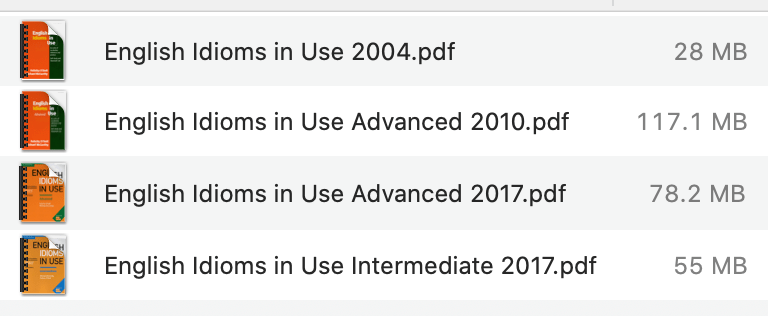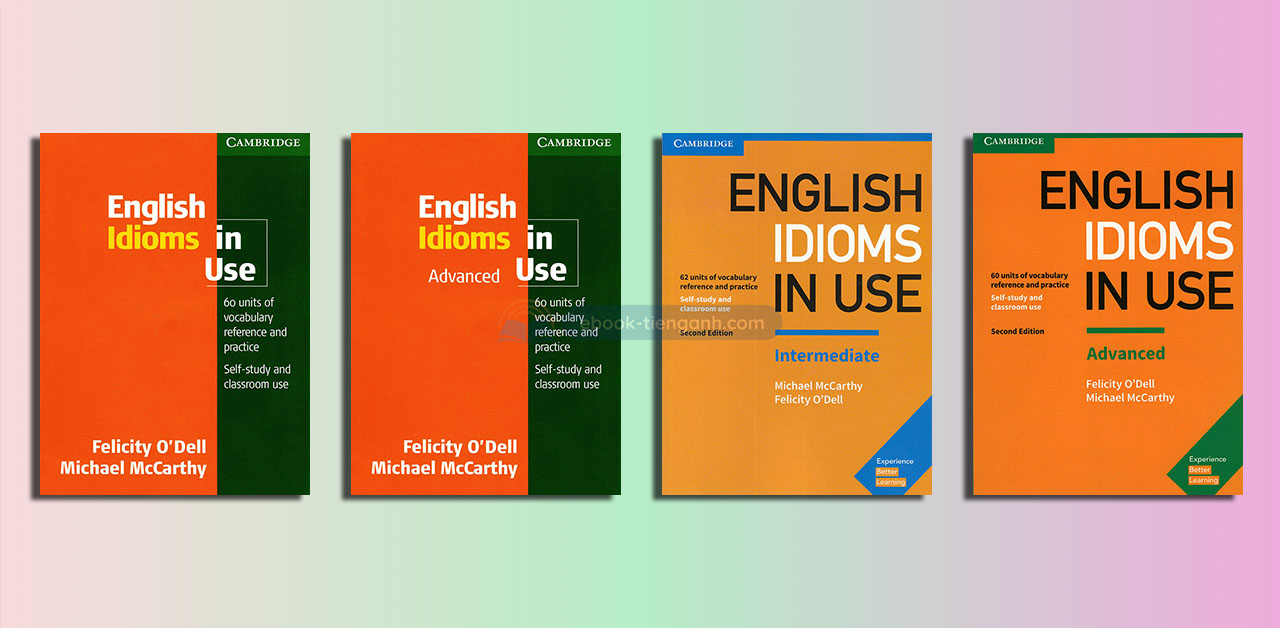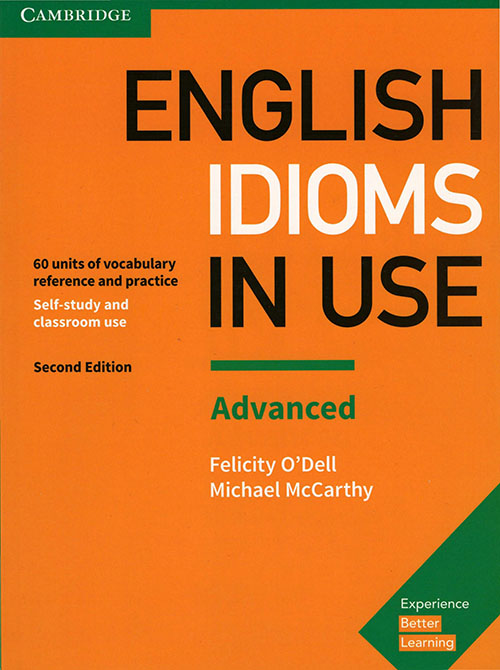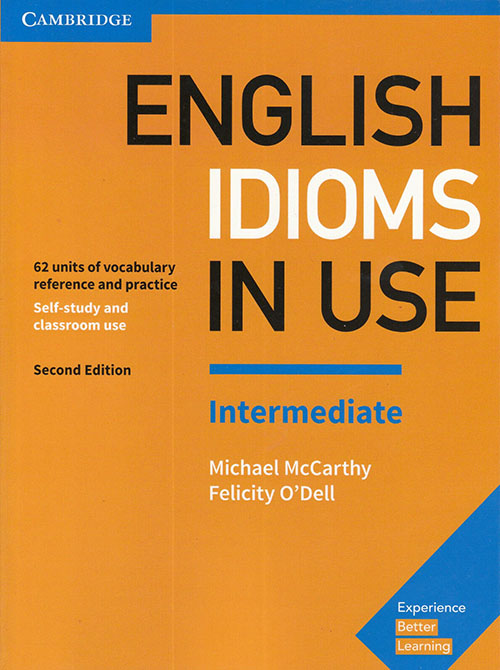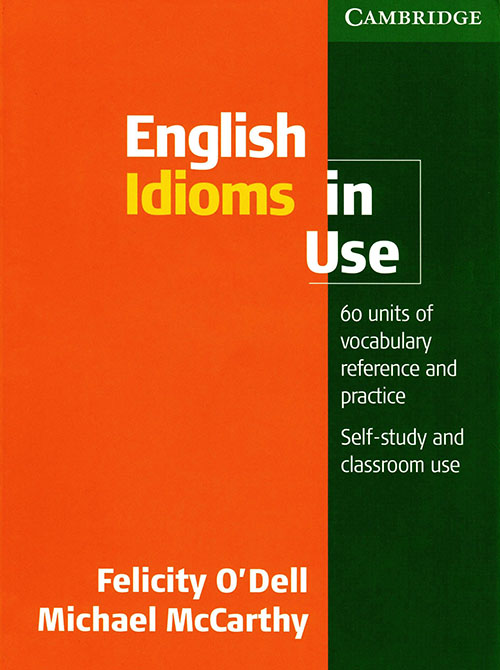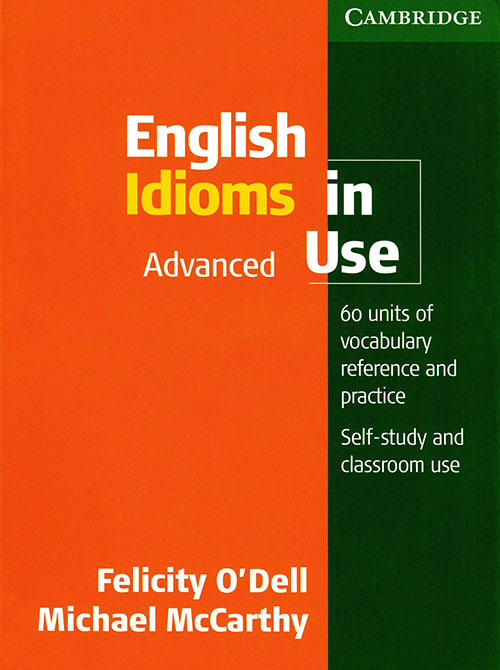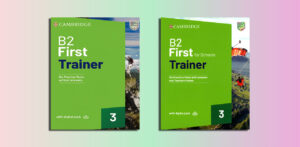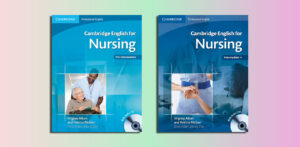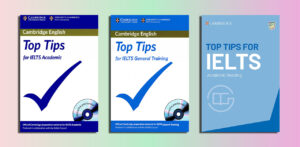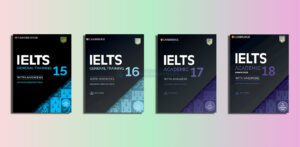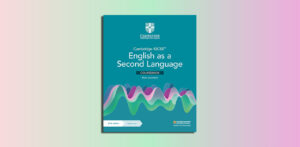English Idioms in Use
English Idioms in Use 2004.pdf – Sample: Click
English Idioms in Use Advanced 2010.pdf – Sample: Click
English Idioms in Use Advanced (Second Edition) 2017.pdf – Sample: Click
English Idioms in Use Intermediate (Second Edition) 2017.pdf – Sample: Click
✅ Get English Idioms in Use (all files): $5 for all files
๏ Make the payment here: Click here
Overview of the “English Idioms in Use”
Contents
- 1 Overview of the “English Idioms in Use”
- 2 Who is suitable for ‘English Idioms in Use’?
- 3 The benefits of ‘English Idioms in Use’
- 4 Effective teaching and learning strategies for ‘English Idioms in Use’
- 5 Comprehensive Guide to Learning English Idioms: Top Books and Resources Beyond Cambridge’s English Idioms in Use
| ✅ Coursebook: | English Idioms in Use Second Edition |
| ✅ Authors: | Michael McCarthy and Felicity O’Dell |
| ✅ Publisher: | Cambridge University Press |
| ✅ English type: | British English |
| ✅ Levels: | (Intermediate to Advanced) B1, B2, C1, C2 |
| ✅ Publication year: | 2017 |
“English Idioms in Use” by Cambridge, authored by Michael McCarthy and Felicity O’Dell, is a comprehensive resource designed for learners of English who wish to understand and use English idioms effectively. This collection is especially focused on idioms that are relevant and commonly used in modern English, making it an invaluable tool for both intermediate (B1-B2) and advanced (C1-C2) learners.
Key features of the book include:
Clear Explanations and Exercises: The books provide easy-to-understand explanations of idioms, coupled with practice exercises. This approach helps learners not only understand the idioms but also apply them in various contexts.
Contextual Learning: Idioms are presented in a variety of topics, such as ‘Clothes’, ‘Music and Theatre’, and ‘Work’ for intermediate learners, and ‘Learning’, ‘Formal Writing’, and ‘Telling Stories’ for advanced learners. This contextual framework assists in grasping the idioms’ usage in different situations.
Research-Backed Content: The content is backed by Cambridge’s research into real-world usage of English, ensuring that learners are getting accurate and practical knowledge.
Self-Study Enhancement: The books are equipped with study tips, follow-up tasks, and answer keys to facilitate effective self-study.
Comprehensive Idiom Index: Each level includes an index of 1,000 idioms, making it a handy reference tool.
The second edition of this series has been updated with new units, an enhanced design, and revised content, making it even more relevant for current learners of English. This series is ideal for both self-study and classroom activities, aiding learners in expanding their understanding and usage of English idioms in everyday communication.
English Idioms in Use Advanced Second Edition
Who is suitable for ‘English Idioms in Use’?
“English Idioms in Use” is suitable for a range of learners who want to improve their understanding and usage of English idioms. The series caters to the following groups:
- Intermediate English Learners (B1-B2 Level): Learners at this level who have a basic grasp of English but want to enhance their fluency and comprehension would find the intermediate book beneficial. It helps them to understand common idiomatic expressions and how to use them in everyday conversations.
- Advanced English Learners (C1-C2 Level): The advanced book is tailored for learners who already have a strong command of English and wish to refine their language skills further, particularly in understanding nuanced idiomatic expressions used in more complex contexts like formal writing or storytelling.
- Self-Study Learners: Individuals who prefer self-guided learning will find the books valuable due to their structured approach, clear explanations, practice exercises, and self-study tips. The answer key also facilitates independent learning.
- English Language Teachers: Teachers looking for resources to teach idioms in their classrooms will find these books useful. The range of topics and exercises can be incorporated into lesson plans to make learning idioms interactive and engaging for students.
- Non-Native English Speakers: Anyone whose first language is not English but wishes to gain proficiency in English, especially in understanding and using idiomatic expressions as used by native speakers.
- Professionals and Students: These books are also ideal for professionals or students who need to use English in formal settings and want to sound more natural and fluent in their communication.
In summary, “English Idioms in Use” is suitable for a wide array of learners, from intermediate to advanced levels, including self-learners, teachers, non-native speakers, professionals, and students. Its comprehensive coverage and practical approach make it a valuable tool for anyone looking to improve their proficiency in English idioms.
English Idioms in Use Intermediate Second Edition
The benefits of ‘English Idioms in Use’
“English Idioms in Use” offers several benefits for learners aiming to enhance their proficiency in English, particularly in the use of idioms. These benefits include:
- Enhanced Understanding of Idioms: The books provide clear explanations of each idiom, making it easier for learners to understand the meaning and usage of phrases that might not be immediately obvious from their individual words.
- Practical Usage and Context: Idioms are taught in the context of various themes and real-life scenarios, aiding learners in understanding how these expressions are used in everyday conversation and in different settings, such as formal writing or casual discussions.
- Improved Fluency and Naturalness in English: By mastering idioms, learners can speak and write more naturally and fluently, similar to native English speakers. Idioms are a key aspect of natural-sounding language.
- Self-Study Friendly: The books come with exercises, study tips, follow-up tasks, and an answer key, making them ideal for self-study. Learners can progress at their own pace and have resources to check their understanding.
- Applicability for a Range of Levels: With editions for both intermediate and advanced learners, the series is versatile, catering to a wide range of proficiency levels. This allows learners to continue using the series as they advance in their English language skills.
- Cultural Understanding: Idioms often carry cultural meanings and connotations. Learning these phrases can provide insight into the culture and thought processes of native English speakers.
- Enhanced Reading and Listening Comprehension: Knowing idioms can significantly improve comprehension when reading English literature, newspapers, or listening to English media, where idioms are frequently used.
- Educational Resource for Teachers: English language teachers can use these books as a teaching aid to make their lessons more engaging and effective in teaching idiomatic expressions.
- Confidence Boost: As learners become more familiar with idioms, their confidence in using English in various social and professional situations increases.
- Comprehensive Reference: With an index of 1,000 idioms per level, the books serve as a comprehensive reference for learners to revisit and reinforce their learning.
Overall, “English Idioms in Use” is a valuable resource for anyone looking to deepen their understanding of English idioms, improve their fluency and expressiveness, and gain cultural insights. Its structured approach and practical exercises make it a beneficial tool for both self-study and classroom learning.
English Idioms in Use
Effective teaching and learning strategies for ‘English Idioms in Use’
To maximize the effectiveness of teaching and learning with “English Idioms in Use,” both instructors and learners can employ various strategies. These approaches enhance engagement, retention, and practical application of idioms in real-world scenarios:
- Contextual Learning: Teach idioms in the context of stories, situations, or real-life events. This helps learners understand the usage and nuance of each idiom in a natural setting. For example, discussing idioms related to emotions in the context of a story can make them more memorable.
- Interactive Activities: Incorporate games and interactive activities like role-playing, idiom charades, or creating dialogues using specific idioms. These activities encourage active participation and make learning fun and engaging.
- Regular Practice: Consistent practice is key. Encourage learners to use new idioms in their spoken and written language. Regular assignments, discussions, or journal entries can facilitate this practice.
- Peer Teaching: In a classroom setting, have students teach each other new idioms. This peer learning approach reinforces understanding and helps students gain confidence in explaining and using idioms.
- Use of Multimedia Resources: Supplement learning with songs, movies, TV shows, or podcasts that use English idioms. This exposes learners to idioms used in various contexts and accents.
- Real-World Application: Encourage students to find idioms in newspapers, magazines, or online articles and discuss their meanings and usage. This activity connects classroom learning with real-world language use.
English Idioms in Use Advanced
- Cultural Exploration: Since many idioms are culturally specific, exploring the cultural background or origin of certain idioms can make the learning process more insightful and engaging.
- Group Discussions: Facilitate group discussions where idioms can be used naturally. Topics can be related to current events, personal experiences, or hypothetical scenarios.
- Flashcards and Visual Aids: Create flashcards or visual aids with idioms and their meanings. Visual representations can aid memory and make recall easier.
- Feedback and Correction: Provide constructive feedback on the usage of idioms in spoken and written exercises. Correcting mistakes gently and explaining nuances can greatly improve learners’ proficiency.
- Self-Assessment and Reflection: Encourage learners to assess their own progress and reflect on their learning journey. They can keep a log of idioms they have learned and note down instances where they used them successfully.
- Customized Learning Paths: Recognize that each learner is different. Some may grasp idioms quickly, while others may need more time. Tailoring learning paths to individual needs can improve outcomes.
By incorporating these strategies, both teachers and learners can enhance the effectiveness of learning idioms with “English Idioms in Use,” making the process more enjoyable, comprehensive, and relevant to real-world communication.
Comprehensive Guide to Learning English Idioms: Top Books and Resources Beyond Cambridge’s English Idioms in Use
For learners looking for alternatives to the “English Idioms in Use” series by Cambridge, which is designed to help students understand and use English idioms effectively, several educational series offer similar benefits focused on idiomatic expressions and practical language use. These alternatives aim to enhance learners’ understanding of English expressions through structured lessons, engaging exercises, and real-world application. Here are notable series that provide structured instruction, engaging content, and effective skill development:
- “Oxford Idioms Dictionary for Learners of English” by Oxford University Press: Provides a comprehensive resource that explains more than 10,000 idioms and phrases used in contemporary English, complete with examples and origins.
- “The Ultimate Phrasal Verb Book” by Barron’s Educational Series: Focused on phrasal verbs, which are closely related to idioms, this book offers clear explanations and practical exercises for learners to master this tricky part of English language.
- “McGraw-Hill’s Dictionary of American Idioms and Phrasal Verbs” by McGraw-Hill Education: Offers extensive coverage of idiomatic expressions in American English, providing clear definitions and usage examples that are helpful for understanding and mastering idioms.
- “Idioms Organiser” by John Wright (published by Thomson Heinle): A structured practice book that categorizes idioms and phrases to help learners understand and practice them in context, making it easier to integrate into their language use.
- “Practical Everyday English” by Steven Collins: A self-study manual of English expressions for advanced students, focused on practical usage of idiomatic phrases and vocabulary enhancement.
- “English Phrasal Verbs in Use” by Cambridge University Press: Although focusing on phrasal verbs, this series also touches on idiomatic usage and is structured similarly to “English Idioms in Use,” providing clear explanations and practical exercises.
- “Speak English Like an American” by Language Success Press: A fun and engaging book series that teaches typical American English expressions and slang through dialogues, illustrations, and exercises.
- “Nitty Gritty Grammar: Sentence Essentials for Writers” by Ann Longknife and K. D. Sullivan: While not exclusively focused on idioms, this resource helps learners use idiomatic expressions correctly in their writing through clear grammar explanations and examples.
- “English Idioms and Expressions for Everyone, Yes, Even You!” by Wayne Magnuson: This book provides a wide array of idioms with explanations, example sentences, and origins, making it an excellent resource for learners looking to deepen their understanding of English expressions.
- “Scholastic Dictionary of Idioms” by Marvin Terban: Aimed more at younger learners but still highly useful for all ages, this dictionary explains over 700 common American idioms, helping users understand their meanings and origins.
- “The Great Book of American Idioms” by Lingo Mastery: This book offers a comprehensive look at American idioms, providing clear definitions, example sentences, and usage tips to help learners use idioms like native speakers.
- “Idioms in the News – 1,000 Phrases, Real Examples” by Peter Bengelsdorf: Utilizes real-life newspaper examples to teach idioms, showing how they are used in contemporary media, which helps learners see how idioms function in real contexts.
- “The Idiom Adventure: Fluency in Speaking and Listening” by Dana Watkins: This book uses thematic chapters to introduce idioms in context, providing exercises and activities that engage learners in active use and understanding of idiomatic expressions.
- “Making Headway: Phrasal Verbs and Idioms” by Graham Workman: Focused on both phrasal verbs and idioms, this resource provides context and practice for intermediate and advanced learners to master these complex aspects of English.
These resources not only focus on improving understanding of idioms but also aim to enhance overall English proficiency through practical examples, exercises, and engaging content. They help learners navigate the complexities of idiomatic English, making them more confident and effective communicators in both spoken and written English.

